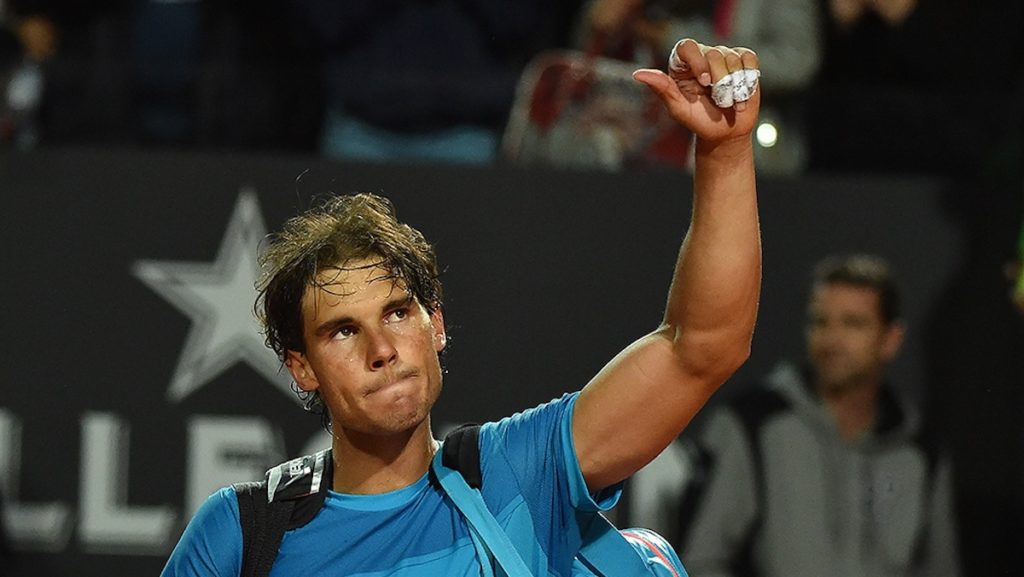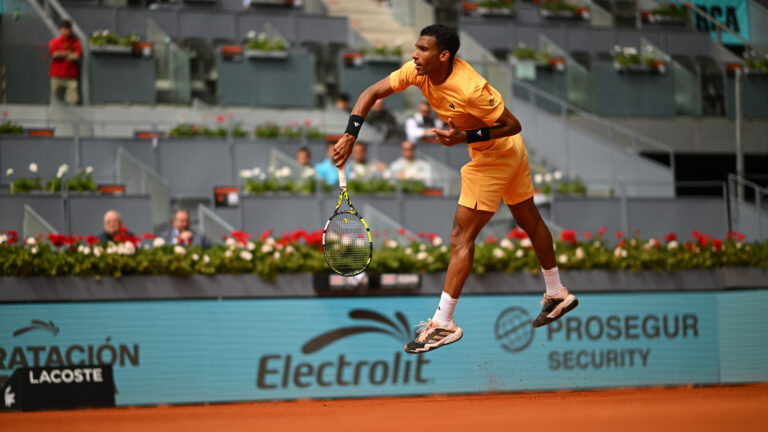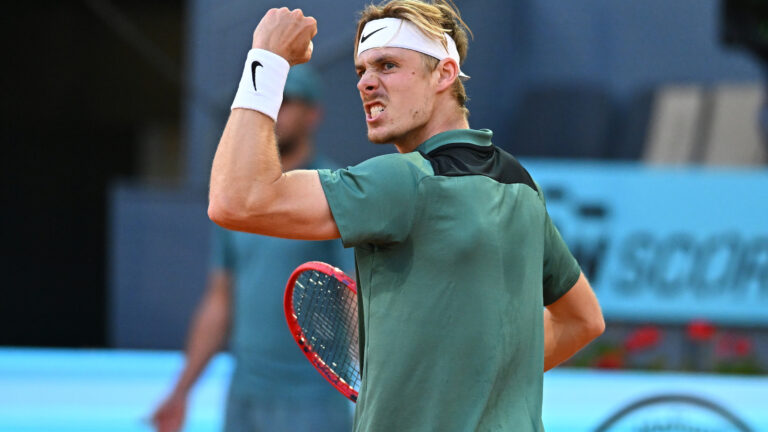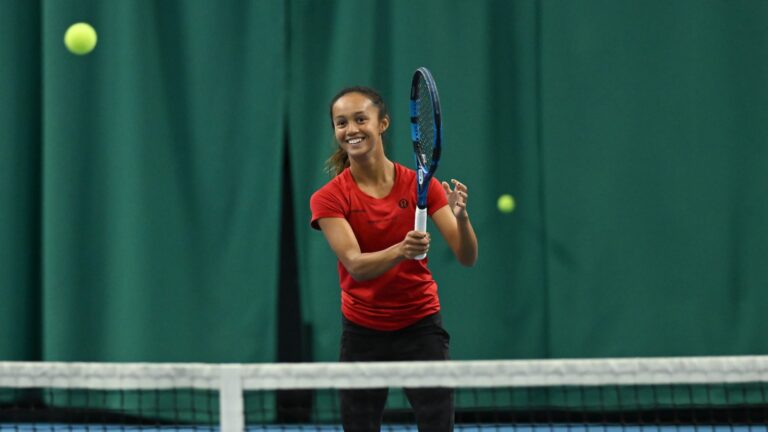
No player – not even Willie Renshaw in the stone age of tennis at Wimbledon between 1881 and 1889 or Pete Sampras and Roger Federer at the All England Club in more recent times – has gone beyond seven triumphs at any single Grand Slam tournament.
Rafael Nadal is the exception – he has won nine French Opens between 2005 and 2014. The one year he slipped up, 2009, he was bothered by a knee injury, which subsequently kept him out of Wimbledon, and distracted by his parents’ separation (they eventually reconciled).
To show just how dominant he is on the terre battue in Paris, the year before (2008) and the year after (2010) he won the French Open without losing a single set. And in the 2010 final, as if to put an exclamation point on his superiority, he dusted Robin Soderling 6-4, 6-2, 6-4, avenging his loss to the Swede in the round-of-16 a year earlier. That has been his only loss at the French Open – his career match record is a mere 66-1.
Over that decade of tournaments, he has just twice been extended to five sets – by John Isner in the first round in 2011 and by Novak Djokovic in the 2013 semifinals – a match played over two days that finished 6-4, 3-6, 6-1, 6-7(3), 9-7.
The question heading into the 2015 French Open, which begins Sunday, is how much will past accomplishments mesh with Nadal’s current form, which has been his poorest ever entering the second Grand Slam of the year?
For comparison’s sake, 10 years ago at 18-years-old he entered Roland Garros having won three European clay-court events – Monte Carlo (Guillermo Coria), Barcelona (Juan Carlos Ferrero) and Rome (Guillermo Coria).
Now, 28 and turning 29 on June 3rd in two weeks, he comes into the French Open with no victories at four European clay-court tournaments and a modest 10-4 match record – Monte Carlo (semifinal Novak Djokovic), Barcelona (2nd match Fabio Fognini), Madrid (final Andy Murray) and Rome (quarter-final Stan Wawrinka).
The match that sticks in the mind is last Friday’s 7-6(7), 6-2 loss to Wawrinka, a player he was 12-1 against, with the lone loss in the 2014 Australian Open final coming with an asterisk – the Spaniard injured his back in the warm-up and was far from 100 per cent.
Tennis, like all sports, can turn on very little and it was remarkable that Nadal was unable to win the first set against Wawrinka in Rome after having a 6-2 lead in the tiebreak. It brings to mind Andy Roddick’s 6-2 tiebreak lead over Roger Federer in the second set of the 2009 Wimbledon final when he was already leading by a set.
Nine out of 10 times Nadal (v. Wawrinka) and Roddick (v. Federer) would win the tiebreak and mostly likely the match. In Nadal’s case, if he had beaten Wawrinka he would have played Federer in the semifinal – and everyone knows about his mastery of the Swiss, a mastery that’s accentuated on red clay.
So the final ‘if’ here, if he had beaten Federer, Nadal would have played Djokovic in the Rome final – a last big gut check before Roland Garros.
There’s no question Wawrinka played superb, brutally-aggressive tennis against Nadal in the Rome quarter-final, and it was more him winning the match than Nadal losing it as it had been in his pitiful performance in a 6-3, 6-2 loss to Murray in the Madrid final.
“I was happy with the way I played,” Nadal said after losing to Wawrinka, “he played some amazing shots. I’ve lost in the quarter-final but I had two weeks in a row playing well and only one bad match with Andy Murray. I am not playing bad.
“The only thing is I’m sure I will try in Paris. I feel like I am playing well and if I continue practicing the way I am, I am confident. I have not been playing with nerves, and that is the most important thing.
“I am ready to accept the challenge but if I don’t play well (and) I lose, life goes on. I have still won so many times there before.”
Looking ahead to Roland Garros, Nadal has two things going for him:
- With his awesome record there, he automatically has an aura about him. If he gets on a roll his opponents are going to be all too aware of who is across the net and what he has done in the past.
- Three-out-of-five sets makes it a lot harder than two-out-of-three when it comes to beating a peerless competitor and physically intimidating player like Nadal.

A lot has been made about him being seeded No. 7 because he can potentially play one of the top four seeds in the quarter-finals, including the top-seeded Djokovic. But that basically is only a one in four possibility and there’s no doubt he would be a strong favourite against the other top-four seeds – Federer, Murray (despite the Madrid result) or Tomas Berdych. In fact, it might be argued that fellow No. 5 to No. 8 seeds – Kei Nishikori (5), Milos Raonic (6), if he plays, and David Ferrer (8) – might be even bigger threats to Nadal than Federer, Murray or Berdych.
Ideally, Nadal will be drawn into the opposite half to Djokovic at Friday’s draw ceremony at Roland Garros, setting up the scenario of Nadal going for victory No. 10 and Djokovic for No. 1 in the grand finale on June 7th.
The Majorcan enters the French Open apparently healthy and in a favourable position because most of the pressure is on Djokovic and his quest to complete the career Grand Slam.
Likely Nadal will have more chances to win a 10th Roland Garros, while Djokovic, turning 28 on Friday, could see his chances for a breakthrough slipping away.
A final thought, the Serb’s last two losses in Grand Slam events, to Nishikori in the 2014 US Open semifinals and to Nadal in the 2014 French Open final have occurred on hot, muggy days that seem to sap him of his energy. So, the weather could always be a wild card affecting his chances – but probably only against his toughest opposition – i.e. Nadal and maybe a Murray or Nishikori.
A cool, rainy day – and there have been those for French Open finals – might also favour Nadal’s ability to ‘muscle’ the ball in heavy conditions.
Here are the current the British booking firm Ladbroke’s odds for the 2015 French Open – take your pick.
Djokovic: 8/11
Nadal: 3-1
Murray: 8-1
Nishikori: 16-1
Federer: 18-1
Wawrinka: 22-1
Monfils: 50-1
Dimitrov: 66-1
Raonic: 100-1
Serena and Maria are the heavies

It now comes out that Serena Williams believes she made a mistake last year in her preparation for Roland Garros. She was shocked 6-2, 6-2 in the second round by Garbine Muguruza and said, after pulling out of Rome last week with an elbow issue, that she probably should have been more prudent about an injury she carried before the French Open a year ago.
She suggested last week that she was “really injured” and took five days off and just practiced for a day or two before Roland Garros ’14 began.
This year, a semifinal loss to Petra Kvitova in Madrid and then having to withdraw after a bye and a second-round win over Anastasia Pavlyuchenkova in Rome, will not be the ideal preparation – although she did have quality wins over Sloane Stephens, Victoria Azarenka and Carla Suarez Navarro before her exit at the Mutua Madrid Open.
Maria Sharapova, defending champion and winner of two of the past three French Opens, enters this year’s event off a hard-fought 4-6, 7-5, 6-1 victory over Suarez Navarro in Sunday’s Rome final.
“I came in wanting to get as many matches as I could in this last tournament of preparation,” Sharapova said, “and I got that. It means a lot getting this first victory since Brisbane (in January).”
For someone who at one time didn’t feel at all comfortable on clay, it was an 11th career title on the gritty stuff and a 35th overall.

Suarez Navarro scored a big semifinal 2-6, 6-3, 7-5 win over second seed Simona Halep to go with earlier wins over Kvitova and Genie Bouchard.
The 5-foot-4 Spaniard, 26, has always been a bit of a passive figure but she seems to be maturing and becoming more comfortable. Currently, she has her ranking at a career-high No. 8.
She may lead the pack behind Williams and Sharapova, which also includes last year’s runner-up Halep, Kvitova, champion in Madrid, as well as Victoria Azarenka, ranked a misleading No. 27 as she continues her comeback from a 2014 year ruined by a left foot injury.
Bouchard would normally be in this group, especially after reaching the 2014 Roland Garros semifinals and pushing Sharapova to the limit, but her recent results have dampened hopes for the current world No. 6.
Here are the Ladbrokes odds for the women’s singles at the French Open:
S. Williams: 11/4
Sharapova: 4-1
Halep: 11-2
Azarenka: 10-1
Kvitova: 12-1
Suarez Navarro: 16-1
Wozniacki: 25-1
Bouchard: 33-1.
A bubbly surprise
Take a look at this video from the end of the presentation ceremony at the Internazionali BNL d’Italia final in Rome on Sunday. Novak Djokovic pops a champagne cork and it come perilously close to going in his eye. He got a tiny bloody nick on the bridge of his nose – and notice how the cork hits his hair just above his forehead. It was a close call that could have totally changed the complexion of the men’s singles event at this year’s Roland Garros.
Scroll down in this story to see how not to open a bottle of champagne.
ACES ’15 – Show #2
Listen to the May 18 edition of ACES on Sportsnet 590 The Fan. Guests are Mark Knowles and Pam Shriver with co-hosts Roger Lajoie and Tebbutt Tuesday’s own TT.
L’affiche de Roland Garros 2015

Roland Garros introduced distinctive posters done by well-known international artists in 1980. It’s a tradition that has produced many interesting works, even some without a tennis motif. The latter is not the case this year with the work done by Du Zhenjun, a Chinese artist born in 1961. He resides in both his home city of Shanghai and Paris.

Of all the posters, this one from 1981 remains arguably the most popular. It was created at a time when the top clay-courters, Bjorn Borg of Sweden and Guillermo Vilas of Argentina, had long hair and wore headbands.
The added touch here is that the headbands contain the blue, white and red national colours of France.
NOTE: There will be a blog this Friday from Roland Garros – reporting on the qualifying event and examining the fallout from the draws that will be done that day.


